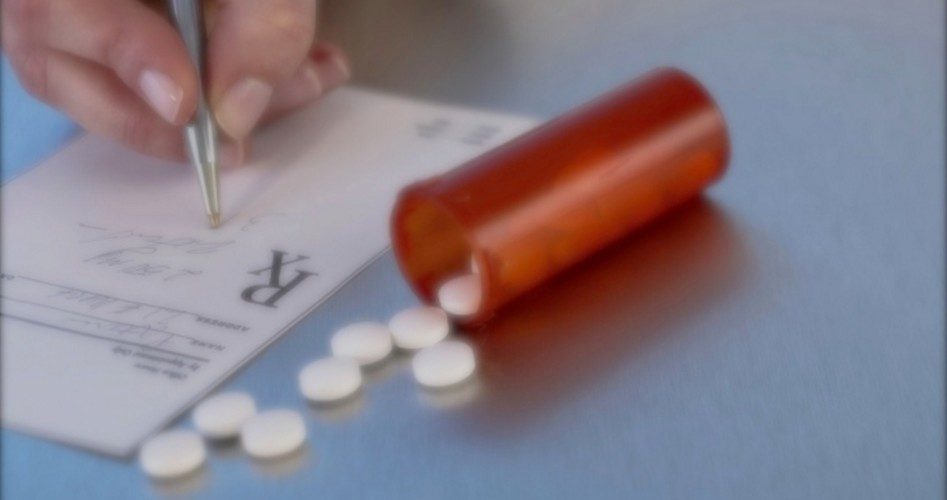
According to an article published this month in Consumer Reports, the number of children taking antipsychotic drugs is rising at alarming rates. Research shows that those numbers have nearly tripled over the last decade, not simply because there is a sudden increase in the number of children diagnosed with schizophrenia or any other serious mental illness, but because more doctors are prescribing drugs to treat behavioral problems.
Consumer Reports writes,
Doctors are prescribing antipsychotics even though there’s minimal evidence that the drugs help kids for approved uses, much less the unapproved ones, such as behavioral problems. And to make matters worse, the little research there is suggests the drugs can cause troubling side effects, including weight gain, high cholesterol, and an increased risk of type-2 diabetes.
Some believe that the increase in these prescriptions results from parents looking to find an easy solution to their children’s behavioral problems.
“There’s a societal trend to look for the quick fix, the magic bullet that will correct disruptive behaviors,” said David Rubin, M.D., associate professor of pediatrics at the Perelman School of Medicine at the University of Pennsylvania in Philadelphia. “But for those looking for a quick solution to escalating behaviors at home, the hard truth is there is unlikely to be a quick fix.”
Consumer Reports also notes the increase in the prescribing of antipsychotics can be attributed to several other factors, including aggressive drug marketing and a lack of access to quality healthcare.
“Use is really high among kids in the Medicaid system where decent non-drug services may be difficult to find,” says Rubin, who also points out that even kids with private insurance often don’t have coverage for psychiatric care or counseling.
More frequently, doctors have resorted to prescribing antipsychotics as a first-line response more to symptoms of mental health issues, prompting a recent announcement from the American Psychiatric Association that doctors should not be routinely prescribing these drugs as a first-line treatment to children unless it is to treat psychotic disorders such as schizophrenia.
But as noted in Consumer Reports, though certain antipsychotic drugs have been approved by the FDA to treat serious conditions in adolescents such as bipolar disorder and schizophrenia, the majority of children prescribed those drugs are not taking them for those reasons:
Schizophrenia is rarely diagnosed until adulthood, for example. Bipolar disorder is estimated to affect less than 3 percent of teens, according to the National Institute of Mental Health, but the exact prevalence is unknown because of its difficulty to diagnose in children. That’s partly because the symptoms are less clear and may overlap with other conditions such as ADHD. And while about one in 110 children have some form of autistic disorder, only about 30 percent are affected by the aggressive impulse behavior antipsychotic drugs have been approved to treat.
So why are so many children taking these antipsychotic drugs?
Research shows that doctors are prescribing the drugs for “off-label” uses such as for ADHD and other diagnosed behavioral problems, which involve a significantly higher percentage of children than schizophrenia and bipolar disorder.
“What started out as a treatment with some level of evidence for a small sub-group of youth with significant development disabilities … has been extended to cognitively normal kids without any strong evidence,” Rubin said.
There is another reason for this increase in the number of antipsychotic drugs being prescribed to children, according to the Centers for Disease Control. CBS News reported earlier this year, “The CDC data was collected between 1994 and 2011, and it shows that the number of children being diagnosed with mental disorders has been steadily growing. The study did not conclude exactly why the numbers are increasing.”
Dr. Ruth Perou, the lead author of the CDC’s first study of children aged three to 17, stated, “This is a deliberate effort by CDC to show mental health is a health issue. As with any health concern, the more attention we give to it, the better. It’s parents becoming aware of the facts and talking to a health-care provider about how their child is learning, behaving and playing with other kids.”
But what some are calling a growth in the rate of mental health issues may in fact be nothing more than a misdiagnosis of health disorders as a result of expanded medical terms and definitions.
Slate.com reported in April:
Beware the DSM-5, the soon-to-be-released fifth edition of the “psychiatric bible,” the Diagnostic and Statistical Manual. The odds will probably be greater than 50 percent, according to the new manual, that you’ll have a mental disorder in your lifetime.
Although fewer than 6 percent of American adults will have a severe mental illness in a given year, according to a 2005 study, many more—more than a quarter each year—will have some diagnosable mental disorder. That’s a lot of people. Almost 50 percent of Americans (46.4 percent to be exact) will have a diagnosable mental illness in their lifetimes, based on the previous edition, the DSM-IV. And the new manual will likely make it even “easier” to get a diagnosis.
Dr. Allen Frances, chair of the DSM-IV Task Force and author of Saving Normal: An Insider’s Revolt Against Out-of-Control Psychiatric Diagnosis, DSM-5, Big Pharma, and the Medicalization of Ordinary Life, fears that the DSM-5 will result in a “massive diagnostic inflation that could lead to tens of millions of people receiving psychiatric drugs they don’t need.”
Consumer Reports writes that the prescription drug companies are guilty of aggressively marketing their medications by overhyping the benefits and downplaying the risks:
Antipsychotics have become huge moneymakers for the drug industry. In 2003, annual U.S. sales of the drugs were estimated at $2.8 billion; by 2011, that number had risen to $18.2 billion. That huge growth was driven in part by one company — Janssen Pharmaceuticals — and its aggressive promotion of off-label uses in children and elderly patients, relying on marketing tactics that according to the federal government, crossed legal and ethical lines.
In November, Janssen Pharmaceuticals and two other subsidiaries of the behemoth drug manufacturer Johnson & Johnson agreed to pay more than $2.2 billion to settle criminal and civil claims stemming from deceptive marketing of the antipsychotics risperidone (Risperdal) and other products. According to claims made by the U.S. Department of Justice, the companies marketed two antipsychotics for uses that were never proved safe and effective using tactics that allegedly included downplaying serious risks and paying kickbacks to physicians and pharmacies for prescribing and promoting the drugs.
The CDC study found that the annual cost of treating children’s mental conditions is $247 billion.
But critics have pointed out that the side effects of anti-psychotic drugs could worsen — or in some cases actually cause — symptoms of mental illness.
According to the Citizens Commission on Human Rights International (CCHRINT), there is abundant evidence proving a connection between psychotropic medications and violent crimes, and government officials are well aware of the connection: “Between 2004 and 2011, there have been over 11,000 reports to the U.S. FDA’s MedWatch system of psychiatric drug side effects related to violence,” says CCHRINT, including 300 homicides.
“What’s not known about the long-term effects is very troubling,” said Christopher Bellonci, M.D., assistant professor at Tufts University School of Medicine in Boston. “The younger you go, the more you can affect the developing brain.”
Consumer Reports recommends that parents seek a second opinion following a diagnosis of a mental disorder in their children, and that they develop a treatment plan that includes non-drug measures such as cognitive behavior therapy. In extreme cases when medications may be warranted, the magazine suggests that parents “know when to stop,” and revisit the use of medications after several months to confirm that they are still necessary and useful.
Related article:



